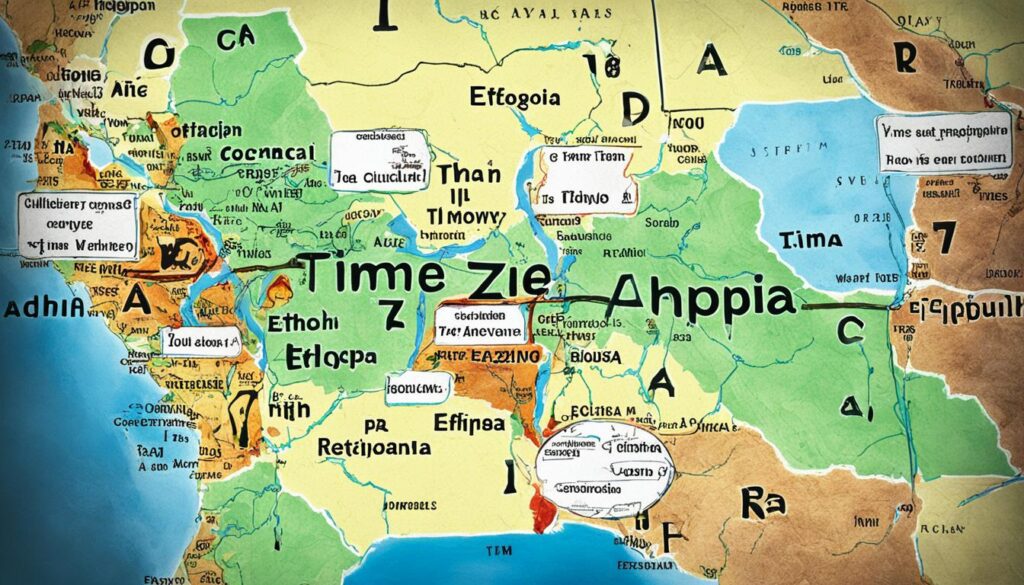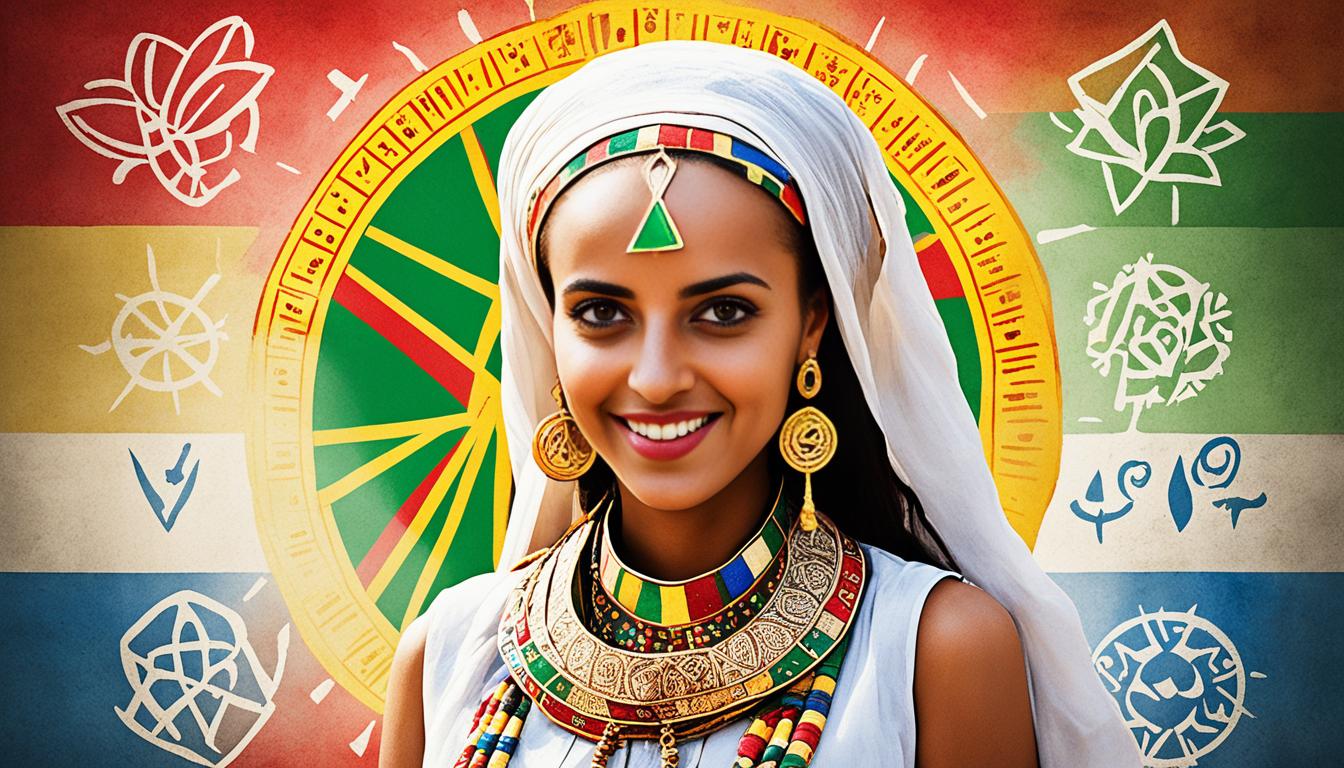Does Ethiopia Have a Different Calendar?
Imagine a country where the year is not the same as the rest of the world. That’s exactly the case in Ethiopia, where they follow a calendar system that is distinct and unique. The Ethiopian Calendar, also known as the Ge’ez Calendar, sets Ethiopia apart from other nations and showcases its rich cultural heritage and traditions.
The Ethiopian Calendar, which is 7 to 8 years behind the Gregorian Calendar, adds a fascinating dimension to the way time is measured and celebrated in the country. With 12 months of 30 days each, and an additional 5 or 6 days at the end of the year, Ethiopia’s calendar system has its own rhythm and pace.
One of the major events that occurs in this unique calendar is the Ethiopian New Year, known as Enkutatash or Meskerem, which falls on September 11 or 12 in the Gregorian Calendar. This celebration marks the end of the rainy season and the start of the harvest season, making it a significant holiday in Ethiopian culture.
To fully appreciate Ethiopia’s cultural fabric and understand the country’s traditions, it’s crucial to delve into the intricacies of the Ethiopian Calendar system. Join us as we explore the fascinating world of Ethiopia’s own calendar.
Key Takeaways:
- Ethiopia follows its own calendar system known as the Ge’ez Calendar or the Ethiopian Calendar.
- The Ethiopian Calendar is 7 to 8 years behind the Gregorian Calendar.
- Ethiopia celebrates the Ethiopian New Year, known as Enkutatash or Meskerem, on September 11 or 12 in the Gregorian Calendar.
- The Ethiopian Calendar has 12 months of 30 days each, with an additional 5 or 6 days added at the end of the year.
- The Ethiopian Calendar is deeply rooted in Ethiopian culture, influencing religious festivals, agricultural practices, and social events.
The Unique Ethiopian Calendar System
The Ethiopian Calendar, also known as the Ge’ez Calendar, is the official calendar of Ethiopia used for both civil and ecclesiastical purposes. It is based on the ancient Coptic Calendar and shares similarities with the Coptic calendar used by the Coptic Orthodox Church.
The Ethiopian Calendar consists of 12 months, each with 30 days, and adds 5 or 6 additional days at the end of the year to align with the solar cycle. This calendar system has a rich history and is deeply ingrained in Ethiopian culture.
The Ethiopian Orthodox Church follows the Ethiopian Calendar as its liturgical year, marking important religious events and celebrations. The calendar system is not only a practical tool for timekeeping but also holds significant cultural and religious importance.
The Ethiopian Calendar, with its unique calculations and traditions, adds depth and meaning to the country’s celebrations and daily life.
To get a better understanding of the Ethiopian Calendar, it is important to explore its history and the specific customs associated with it.
The History of the Ethiopian Calendar
The Ethiopian Calendar has its roots in the Coptic calendar, which was developed in ancient Egypt. It was introduced to Ethiopia by early Christian missionaries who came from Egypt. Over time, the Ethiopian Calendar underwent modifications and became tailored to the Ethiopian context. Today, it stands as a testament to the country’s distinct cultural identity.
One notable difference between the Ethiopian Calendar and the Gregorian Calendar is the calculation of the birth of Jesus. The Ethiopian Calendar places the birth of Jesus seven to eight years earlier, resulting in the calendar being behind the Gregorian Calendar.
The Difference in Dates
Due to the difference in calculations for the birth of Jesus, the Ethiopian Calendar is 7 to 8 years behind the Gregorian Calendar. This means that Ethiopian holidays and events are celebrated on different dates compared to the rest of the world.
For example, the Ethiopian New Year falls on September 11 or 12 in the Gregorian Calendar. It is important to understand this difference when planning visits or events in Ethiopia.
Ethiopian Dates and Gregorian Equivalent
| Ethiopian Dates | Gregorian Equivalent |
|---|---|
| Enkutatash (Ethiopian New Year) | September 11 or 12 |
| Christmas | January 7 |
| Easter | Varies (following the Julian calendar) |
As seen in the table above, Ethiopian holidays such as Enkutatash (Ethiopian New Year), Christmas, and Easter are celebrated on different dates in comparison to the Gregorian Calendar.
Understanding the conversion between the Ethiopian Calendar and the Gregorian Calendar is essential for accurately scheduling and participating in events and celebrations in Ethiopia.
Ethiopian Time Zones

Ethiopia is located in the East Africa Time Zone, which is three hours ahead of Coordinated Universal Time (UTC+3). When traveling to Ethiopia or scheduling meetings and appointments, it is important to take note of the time difference to ensure smooth communication and punctuality.
Additionally, it is essential to consider the impact of Daylight Saving Time in the United States on Ethiopian time. During this period, Ethiopian time is seven hours ahead of U.S. time zones that observe Daylight Saving Time. Keeping these time differences in mind will help avoid any confusion and facilitate effective planning.
Ethiopian Time Zones
Here are the key points to remember regarding Ethiopian time zones:
- Ethiopia is three hours ahead of Coordinated Universal Time (UTC+3).
- The East Africa Time Zone is observed in Ethiopia.
- Daylight Saving Time in the United States affects the time difference between Ethiopia and the U.S., with Ethiopian time being seven hours ahead during this period.
“Understanding the time difference is crucial for anyone planning a trip to Ethiopia or coordinating activities with individuals or organizations in the country. Being aware of the Ethiopian time zone and considering any adjustments due to Daylight Saving Time will ensure a smooth experience.”
Ethiopian New Year Celebration

The Ethiopian New Year is a joyous occasion celebrated with great enthusiasm and cultural significance. Known as Enkutatash or Meskerem, this holiday marks the end of the rainy season and the beginning of the harvest season in Ethiopia. It is a time of renewal, gratitude, and celebration.
On September 11 or 12 in the Gregorian Calendar, Ethiopians come together to honor this special day. The celebration begins with religious ceremonies held in churches across the country. Ethiopian Orthodox Christians attend special prayers and thanksgiving services, seeking blessings for the new year.
The festive atmosphere is further enhanced by traditional music and dance performances. Colorful costumes, rhythmic beats, and lively movements fill the streets as people gather to showcase their cultural heritage through music and dance. These performances not only entertain but also serve as a means of passing down traditions from one generation to another.
Feasting is an integral part of the Ethiopian New Year festivities. Families and communities gather to share delicious meals, often prepared with traditional recipes and local ingredients. The tables are filled with a variety of dishes, including injera (a sourdough flatbread), doro wat (spicy chicken stew), and kitfo (minced raw meat seasoned with spices).
“The Ethiopian New Year is a time for us to embrace our cultural heritage, express gratitude for the blessings received, and look forward to the harvest season. It is a celebration that brings our communities together and strengthens our sense of unity.”
The Ethiopian New Year celebration also involves the exchange of honey wine, known as tej. This traditional drink is made from fermented honey and is believed to symbolize the sweetness and prosperity of the upcoming year. Sharing a glass of tej with loved ones is a cherished tradition that signifies friendship and goodwill.
The Ethiopian New Year is not only a time of celebration but also an opportunity for reflection and renewal. As the country welcomes another year, Ethiopians embrace the chance to set new goals, make resolutions, and strive for personal and collective growth.
Traditional Ethiopian New Year Foods
| Dish | Description |
|---|---|
| Injera | A sourdough flatbread made from fermented teff flour, often used as a utensil to scoop up other dishes. |
| Doro Wat | A spicy chicken stew made with berbere spice blend, onions, garlic, ginger, and various other spices. |
| Kitfo | Minced raw meat, typically beef, seasoned with spices and served with injera. |
| Tibs | Grilled or sautéed meat, often served with vegetables and injera. |
| Shiro | A thick stew made from ground chickpeas or lentils, spiced with berbere and other seasonings. |
Cultural Significance of the Ethiopian Calendar
The Ethiopian Calendar holds great cultural significance in Ethiopian society. It is deeply rooted in the country’s history and traditions. The calendar influences various aspects of daily life, including religious festivals, agricultural practices, and social events.
“The Ethiopian Calendar is not just a tool to mark time; it is a reflection of our rich cultural heritage and a symbol of our independence and resilience,” says Alemayehu Ayele, a cultural historian in Ethiopia. “It has been passed down through generations, serving as a link to our ancestors and a guide to our future.”
The Ethiopian Calendar is closely tied to religious festivals and events. It plays a vital role in determining the dates of major holidays, such as Christmas (Ganna) and Easter (Fasika). These celebrations are deeply ingrained in Ethiopian Orthodox Christianity and are accompanied by vibrant religious processions, music, dance, and feasts. The calendar system ensures that these important religious observances align with the agricultural calendar, connecting spiritual and livelihood practices.
In addition to religious events, the Ethiopian Calendar shapes agricultural practices and events in rural communities. Farmers rely on the calendar to determine the start and end of planting and harvesting seasons. Traditional ceremonies, such as the Buhe festival, which celebrates the end of the rainy season, and the Irreecha festival, which marks the transition to the harvest season, are organized based on the calendar’s guidance.
The Ethiopian Calendar also plays a significant role in social events and gatherings. Many individuals plan weddings, birthdays, and other milestone events based on auspicious dates determined by the calendar. It is believed that events held on these special dates will bring good fortune and blessings.
The unique calendar system is an integral part of Ethiopian cultural identity. It serves as a constant reminder of the country’s historical and religious heritage, connecting Ethiopians to their roots. It highlights the resilience and independence of the Ethiopian people, as they have maintained and preserved their own calendar system despite external influences.
“The Ethiopian Calendar is not just a timekeeping system; it is a cultural treasure that defines who we are as a people,” says Selam Tesfaye, a local historian. “Through this calendar, we honor our ancestors, celebrate our traditions, and cherish our cultural identity.”
The Ethiopian Calendar is not just a relic of the past; it remains a living calendar that continues to shape Ethiopian society. It is a symbol of unity and pride, as it brings people together to celebrate their shared history and traditions.
| Aspect | Influence |
|---|---|
| Religious Festivals | Determines dates for major Orthodox Christian holidays and ensures alignment with the agricultural calendar. |
| Agricultural Practices | Guides farmers in determining planting and harvest seasons, as well as the timing of traditional ceremonies. |
| Social Events and Gatherings | Provides auspicious dates for weddings, birthdays, and other celebrations. |
The Legacy of Ethiopia’s Own Calendar
Ethiopia’s adherence to its own calendar system showcases the country’s rich cultural heritage and its strong sense of identity. The Ethiopian Calendar, also known as the Ge’ez Calendar, has been preserved and passed down through generations, serving as a reminder of Ethiopia’s historical and religious heritage.
The Ethiopian Calendar has a unique legacy that reflects the country’s independence and unique traditions. It is deeply ingrained in Ethiopian society, influencing various aspects of daily life including religious festivals, agricultural practices, and social events. The continued use of the Ethiopian Calendar is a testament to the resilience and dedication of the Ethiopian people in preserving their cultural identity.
The Ethiopian Calendar holds a significant place in the hearts of Ethiopians and serves as a symbol of their heritage, connecting them to their ancestors and their land. It is a source of pride and a way of celebrating their distinct cultural heritage.
“The Ethiopian Calendar is more than just a tool to mark time. It is a representation of our history, our traditions, and our identity as Ethiopians.”
The Ethiopian Calendar is more than just a measure of time; it is a living testament to Ethiopia’s rich cultural legacy. It acts as a bridge between the past and the present, connecting generations and fostering a deep sense of belonging and unity within the Ethiopian community.
Significance of the Ethiopian Calendar in Ethiopian Orthodox Christianity
The Ethiopian Calendar holds a special place within the Ethiopian Orthodox Church. It is the liturgical calendar followed by Ethiopian Orthodox Christians, guiding their religious practices and observances. The calendar shapes the annual cycle of religious festivals, fasting periods, and celebrations, playing a vital role in the spiritual life of Ethiopian Orthodox believers.
| Months | Significance |
|---|---|
| Meskerem | The Ethiopian New Year, marking the end of the rainy season and the beginning of the harvest season |
| Tikimt | Commemoration of St. Michael and the archangels |
| Hidar | Commemoration of St. Mary and the Nativity of Jesus |
| Tahsas | Commemoration of Christmas |
| Tir | Commemoration of Epiphany |
| Yekatit | Commemoration of the Martyrs of the Faith |
| Megabit | Lenten season leading up to Easter |
| Miazia | Commemoration of the Annunciation |
| Ginbot | Commemoration of the finding of the True Cross |
| Sene | Fast of the Apostles |
| Hamle | Commemoration of St. Gabriel and the Holy Trinity |
| Nehase | Commemoration of the Transfiguration |
The Ethiopian Calendar’s profound influence on Ethiopian Orthodox Christianity further highlights its enduring significance and cherished legacy. It unites Ethiopians in their religious practices and strengthens their faith, deepening their connection to their religious traditions and beliefs.
Conclusion
Ethiopia’s unique calendar system, the Ethiopian Calendar, is a testament to the country’s rich cultural heritage and historical significance. With its distinct calculations and traditions, the Ethiopian Calendar adds depth and meaning to celebrations and daily life in Ethiopia. Understanding and appreciating this calendar is crucial for visitors and researchers alike in order to fully grasp the intricacies of Ethiopia’s cultural fabric.
The Ethiopian Calendar sets Ethiopia apart from the rest of the world, reflecting the country’s cultural richness and the resilience of its people. It is deeply rooted in the history and traditions of this remarkable nation. The calendar system influences various aspects of Ethiopian society, from religious festivals to agricultural practices and social events.
Preserving and continuing the use of the Ethiopian Calendar is a testament to Ethiopia’s independence and unique traditions. This calendar is more than just a tool to measure time; it is a symbol of identity and a reminder of the historical and religious heritage of the Ethiopian people. Embracing and studying the Ethiopian Calendar allows us to delve deeper into the cultural tapestry that makes Ethiopia so vibrant and captivating.





